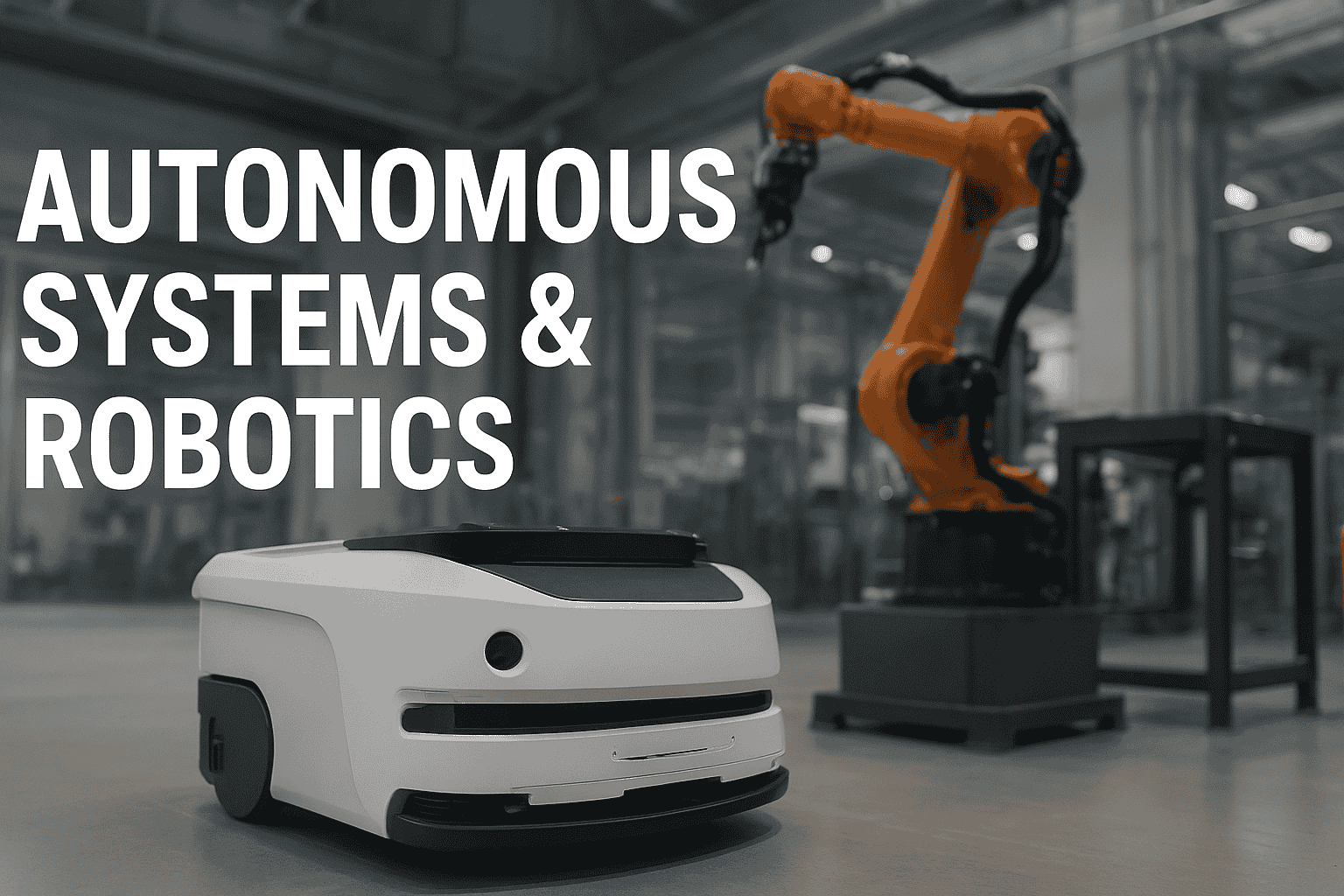Autonomous Systems & Robotics: The Rise of Intelligent Machines in Motion

Introduction
Autonomous systems and robotics aren’t simply futuristic curiosities anymore—they’re very much alive and accelerating in the real world. Across factories, warehouses and even farms, robots and self-driving machines are doing tasks formerly reserved for humans. The trend is now gaining steam thanks to leaps in AI, perception and autonomy. Businesses, workers and consumers alike feel the impact—and the urgency to adapt grows by the day. If you’ve wondered where automation is heading next, the robotics wave may be hitting shores near you.
Background & Context
For decades, robotics was mostly about repetitive tasks in controlled factory lines. But today’s landscape is different—thanks to smarter AI, better sensors and flexible systems. Reports highlight major trends: AI integration, collaborative robots (“cobots”) working alongside humans and autonomous mobile robots (AMRs) managing logistics.
At the same time, market projections show strong growth: the global AMR market alone is expected to grow from USD 4.85 billion in 2025 to nearly USD 29.66 billion by 2034.
These signals combine into a moment when autonomous systems & robotics are front-and-center in tech strategy.
Key Facts / What Happened
- In 2025, the market for autonomous and unmanned ground robots is expanding rapidly in sectors like mining, construction and agriculture—powered by sensor-rich navigation and AI systems.
- Robotics trade-shows such as Automate 2025 showcased major entries in robot arms, AMRs and component ecosystems—30,000-40,000 attendees and strong activity despite economic headwinds.
- The trend in advanced robotics emphasises adaptability, sustainability and intelligence. For example, robots are now built to collaborate with humans, adapt to varying environments and operate with increased autonomy.
- Autonomous systems are moving beyond vehicles: drones, robotic tractors and inspection robots are examples of how autonomy is spreading across industries.
Voices & Perspectives
Industry experts stress this is more than incremental improvement. As the World Economic Forum wrote:
“Autonomous systems integrating AI, sensor technology and connectivity are transforming industries … the next AI frontier.”
Analysts note the growth in robotics is hobbled less by hardware today and more by integration, safety, ethics and workforce adaptation. A plant-floor automation executive commented at Automate 2025: “It’s not just the robot arm anymore—it’s how it connects, how the data flows and how it co-exists with people.”
On the ground, workers in logistics already report fleets of AMRs navigating warehouses, picking, moving and assisting humans—changing workflows in real time.
Implications
For businesses: embracing robotics and autonomous systems can mean major productivity gains, lower risk in hazardous environments, and faster turnaround. For workers: the nature of tasks is shifting—more collaboration, oversight and high-skill coordination rather than simple repetition. For the tech industry: robotics is becoming a key frontier of AI application, sensors and edge computing—not just software. And for society: as autonomy spreads, it raises questions of safety, job displacement, regulation and ethics.
What’s Next / Future Outlook
Going forward, expect to see more holistic autonomous systems—robots that not only act but reason, adapt and collaborate. Developments to watch include: autonomous fleets in logistics, robot-assisted healthcare and elder care, service robots in public spaces, and deeper AI in robotics. And amid rapid growth, safety, trustworthiness and regulatory frameworks will matter ever more. As researchers comment, designing “assured autonomy” is now one of the biggest challenges.
Wrap-Up
Autonomous systems and robotics are no longer niche—they are becoming embedded in how we work, deliver and build. Whether you’re in industry, tech or simply curious about what tomorrow might look like, the robotics movement is hard to ignore. The machines are getting smarter, and our relationship with them is evolving. Welcome to the age of intelligent motion.